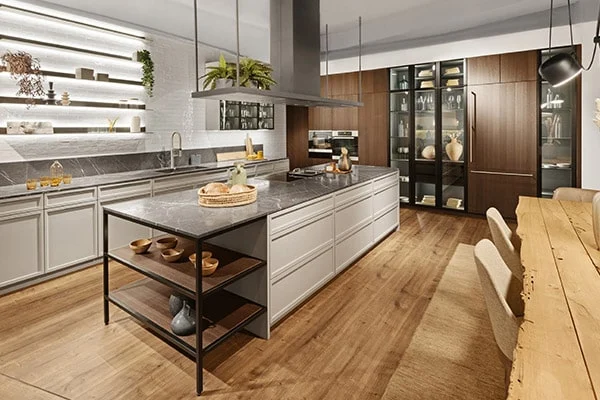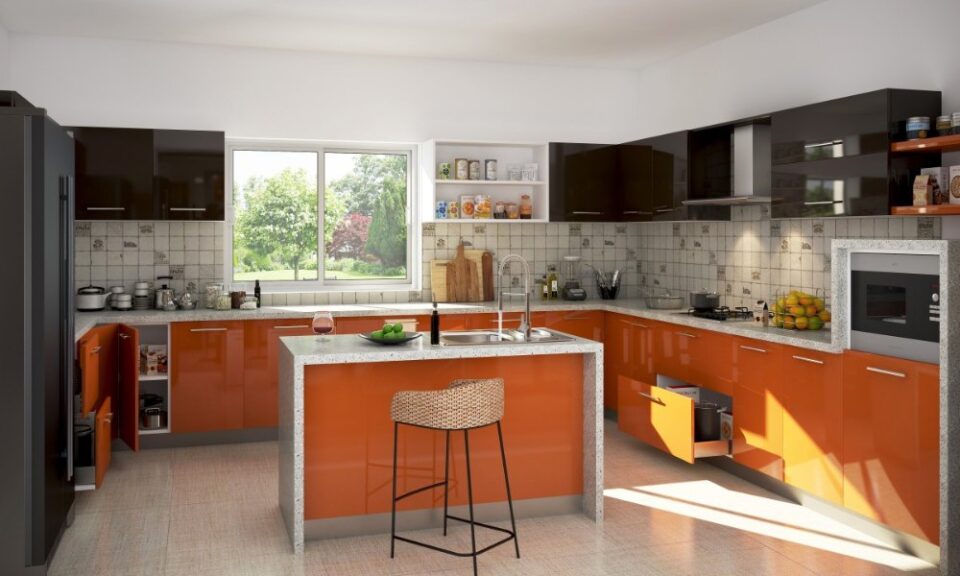A kitchen island is more than a simple slab of countertop; it serves as the nucleus of the home. It’s where meals are prepared, conversations flow, and functionality meets style. Whether you’re a home cook who loves an expansive prep station or someone who enjoys casual dining with family, the right kitchen island shape can elevate both convenience and ambiance.
The shape of your kitchen island dictates the efficiency of your workspace, the flow of movement, and how well it integrates into your home’s overall layout. A well-planned island doesn’t just fill empty space—it enhances usability, complements architectural elements, and ensures seamless interactions between cooking, cleaning, and socializing.
A functional kitchen island optimizes workflow by placing essential areas—such as cooking, prepping, and storage—within arm’s reach. But beyond its practicality, an island also contributes significantly to a kitchen’s aesthetics, creating a focal point that balances design harmony and practicality.
Defining Your Kitchen Needs Before Choosing an Island Shape
Understanding the main function of your island will help determine its ideal shape. Will it be a dedicated prep space, a breakfast bar, or a multitasking hub? Identifying priorities ensures the island serves your lifestyle effectively.
If you frequently cook elaborate meals, an island with generous counter space and easy access to essential tools is vital. For those who prefer quick meals or entertaining, an island with bar seating and an open layout may be more suitable.
A well-designed kitchen island should provide a balance of seating, storage, and workspace. Consider deep drawers, open shelving, and built-in appliances to maximize its functionality without overwhelming the space.
The island shape must complement your kitchen’s dimensions. A compact space benefits from a narrow or L-shaped island, while a spacious kitchen can accommodate larger, more elaborate designs.
Popular Kitchen Island Shapes and Their Functional Benefits
Choosing the right kitchen island shape is essential for creating a balance between functionality and aesthetics. The shape you select influences how you move around the kitchen, interact with family and guests, and maximize available space. From classic rectangular designs to more intricate curved or T-shaped islands, each form offers unique benefits tailored to different kitchen layouts and needs.
- The Classic Rectangular Kitchen Island. A rectangular island provides ample workspace and fits well in most kitchens. It offers a simple yet effective layout for food prep and socializing.
- L-Shaped Islands. Ideal for larger kitchens, L-shaped islands provide distinct zones for cooking, dining, and storage. They enhance workflow and create a natural division within the kitchen.
- U-Shaped Islands. U-shaped islands surround the cook with ample counter space and storage, making them perfect for high-traffic kitchens.
- Curved Kitchen Islands. Curved islands add elegance and facilitate smoother movement, making them excellent for social kitchens.
- T-Shaped Islands. A T-shaped island merges food prep and dining areas, making it a great solution for families or entertainers.
- Double Islands. For large, open kitchens, double islands offer unmatched functionality and grandeur, allowing separate zones for cooking and socializing.
- Round and Oval Islands. These islands promote an organic, communal atmosphere and are excellent for smaller, informal dining spaces.
- Peninsula vs. Island. A peninsula extends from existing cabinetry, providing additional workspace in compact kitchens where a freestanding island isn’t feasible.

How Kitchen Island Shape Affects Workflow
The shape of your kitchen island plays a crucial role in determining how efficiently you can move around and perform daily tasks. A well-designed island shape can streamline meal prep, cooking, and cleaning while enhancing the overall kitchen experience. Selecting an island that aligns with your kitchen’s workflow ensures that movement between essential areas—such as the sink, stove, and refrigerator—remains effortless and natural.
The island’s shape should complement the kitchen layout, preventing congestion and allowing for a free flow of movement. Whether you have a compact space that requires a slim, rectangular island or a larger kitchen that benefits from a U-shaped or double island design, the key is to maintain a logical flow. Additionally, consider how the island’s positioning affects multiple users—does it create bottlenecks, or does it allow for seamless multitasking? Choosing an island shape that supports efficient movement and accessibility will make your kitchen both functional and inviting.
Maximizing Space Utilization with the Right Island Shape
Selecting the right kitchen island shape is crucial for ensuring optimal use of available space while maintaining functionality and style. The shape of your island dictates not only the efficiency of your cooking workflow but also how well it integrates into the surrounding layout. A well-planned island can enhance storage, improve movement, and provide a versatile space for dining and socializing.
When working with a smaller kitchen, choosing a compact rectangular or rolling island can help preserve openness while still offering essential counter space. In larger kitchens, an L-shaped or U-shaped island can maximize prep areas and create well-defined work zones. Open-concept layouts benefit from curved or round islands, which allow for smoother traffic flow and encourage interaction.
Beyond shape, integrating smart storage solutions can further enhance space utilization. Features like pull-out shelves, deep drawers, and built-in spice racks keep the kitchen organized without adding bulk. Additionally, ensuring proper seating arrangements prevents overcrowding and enhances the island’s functionality for both cooking and gathering. By carefully selecting an island shape tailored to your kitchen’s dimensions and needs, you can achieve a harmonious balance between form and function.
Aesthetic Considerations When Choosing an Island Shape
The visual appeal of a kitchen island is just as important as its functionality. The shape of the island should harmonize with the overall kitchen design, creating a cohesive and inviting space. A well-chosen island can serve as a focal point, tying together various elements such as cabinetry, flooring, and color schemes.
Consider how different shapes influence the aesthetic impact of your kitchen. Rectangular islands offer a classic, streamlined look that suits both modern and traditional styles. Curved or rounded islands introduce a softer, more fluid design, making them ideal for contemporary and open-concept spaces. L-shaped and U-shaped islands create distinct work zones, adding visual structure to expansive kitchens.
Material selection also plays a significant role in aesthetics. Quartz, marble, and granite countertops enhance sophistication, while wood or butcher block surfaces add warmth and rustic charm. Finishing touches, such as waterfall edges, contrasting cabinetry, or decorative legs, further personalize the island’s appearance, making it a true statement piece in the kitchen.

